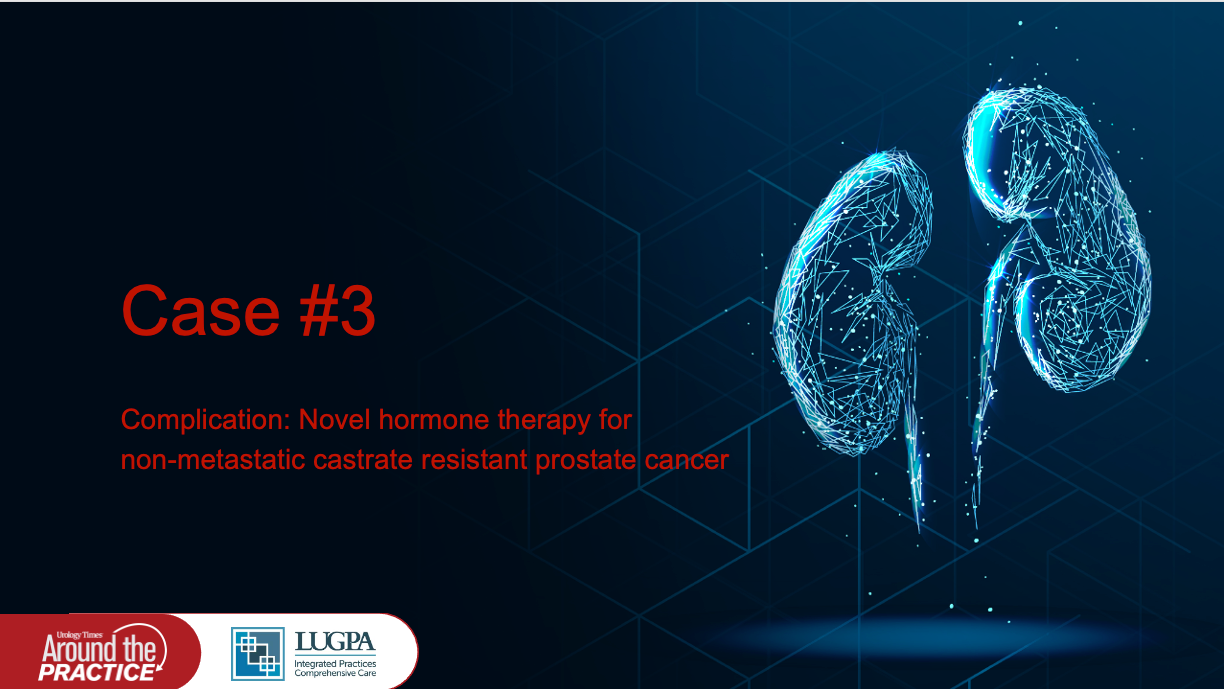Article
Time to castration resistance impacts OS in mHSPC treated with combo regimens
Author(s):
Among patients with metastatic hormone-sensitive prostate cancer (mHSPC) treated with combination regimens, shorter time to castration resistance (TTCR) was associated with higher mortality, according to findings from a single-center retrospective analysis published in Frontiers in Oncology.1
The study population was segmented into 4 subgroups based on TTCR ranges: <12 months, 12-18 months, 18-24 months, and >24 months. At a median follow-up of 34 months, patients with TTCR <12 months had the worst OS. Survival then improved in each successive range, with the best OS occurring in the TTCR >24 months group (P <.001).
Multivariable adjustment showed that compared with TTCR >24 months, patients with TTCR 18-24 months, 12-18 months, and <12 months, had a 4.07-, 3.31-, and 6.40-fold higher mortality (P <.05 for all). In contrast, following development of metastatic castration-resistant prostate cancer (mCRPC), TTCR stratification did not affect OS (P >.05 for all).
“Taken together, our study demonstrates that TTCR also affects OS in mHSPC patients in the era of combination therapies for mHSPC. More specifically, patients with TTCR <12 months are at highest risk of overall mortality, while TTCR >24 months patients exhibited the longest OS. Moreover, these findings were also observed after controlling for patient and prostate cancer characteristics in multivariable adjustment,” Mike Wenzel, MD, Department of Urology, University Hospital Frankfurt, Goethe University Frankfurt am Main, Frankfurt, Germany, and coauthors wrote.
Wenzel et al launched the study because limited data exist regarding the relationship between TTCR and OS in patients with mHSPC treated during the current “combination era” of regimens involving drugs such as abiraterone acetate (Zytiga), docetaxel, apalutamide (Erleada), and enzalutamide (Xtandi).
The study population consisted of 204 patients with mHSPC and subsequent mCRPC diagnosed between 1/2013 and 12/2020 at the Department of Urology, University Hospital Frankfurt, Germany. Among these patients, the TTCRs were <12 months (41.2%; n = 84); 12-18 months (18.1%; n = 37); 18-24 months (15.2%; n = 31); and >24 months (25.5%; n = 52).
For the most part, patient/disease characteristics at baseline were balanced between the 4 TTCR subgroups. Overall, the median patient age at baseline was 67 years (IQR, 61-73) and the median PSA was 61 ng/ml (IQR, 15-294). Further, high-volume metastatic burden (CHAARTED criteria),ECOG performance status, and rates of primary metastatic patients were similar, regardless of TTCR.
Regarding treatment for mHSPC, 113 patients (55.4%) received ADT alone, 46 (22.5%) received docetaxel, 29 (14.2%) received abiraterone, 7 (3.4%) received enzalutamide, and 9 (4.4%) received other treatments. The median number of lines received for mCRPC was 2 (IQR, 1-3). Treatments received in this setting included abiraterone (33.3%; n = 68), docetaxel (13.2%; n = 27), enzalutamide (17.2%; n= 35), and ADT/Other/None (36.3%; n = 74).
Regarding their finding that there was no correlation between TTCR and OS outcomes following the development of mCRPC, the authors wrote, “This observation may lead to the assumption that prolonging OS is most effective when TTCR is prolonged in first-line therapy of mHSPC patients. Therefore, clinicians should be aware of the fact that a prolonged TTCR may be a surrogate for OS.”
Reference
1. Wenzel M, Preisser F, Hoeh B, et al. Impact of time to castration resistance on survival in metastatic hormone sensitive prostate cancer patients in the era of combination therapies [published online before print April 23, 2021]. Front Oncol. 2021. doi: 10.3389/fonc.2021.659135
Newsletter
Stay current with the latest urology news and practice-changing insights — sign up now for the essential updates every urologist needs.















